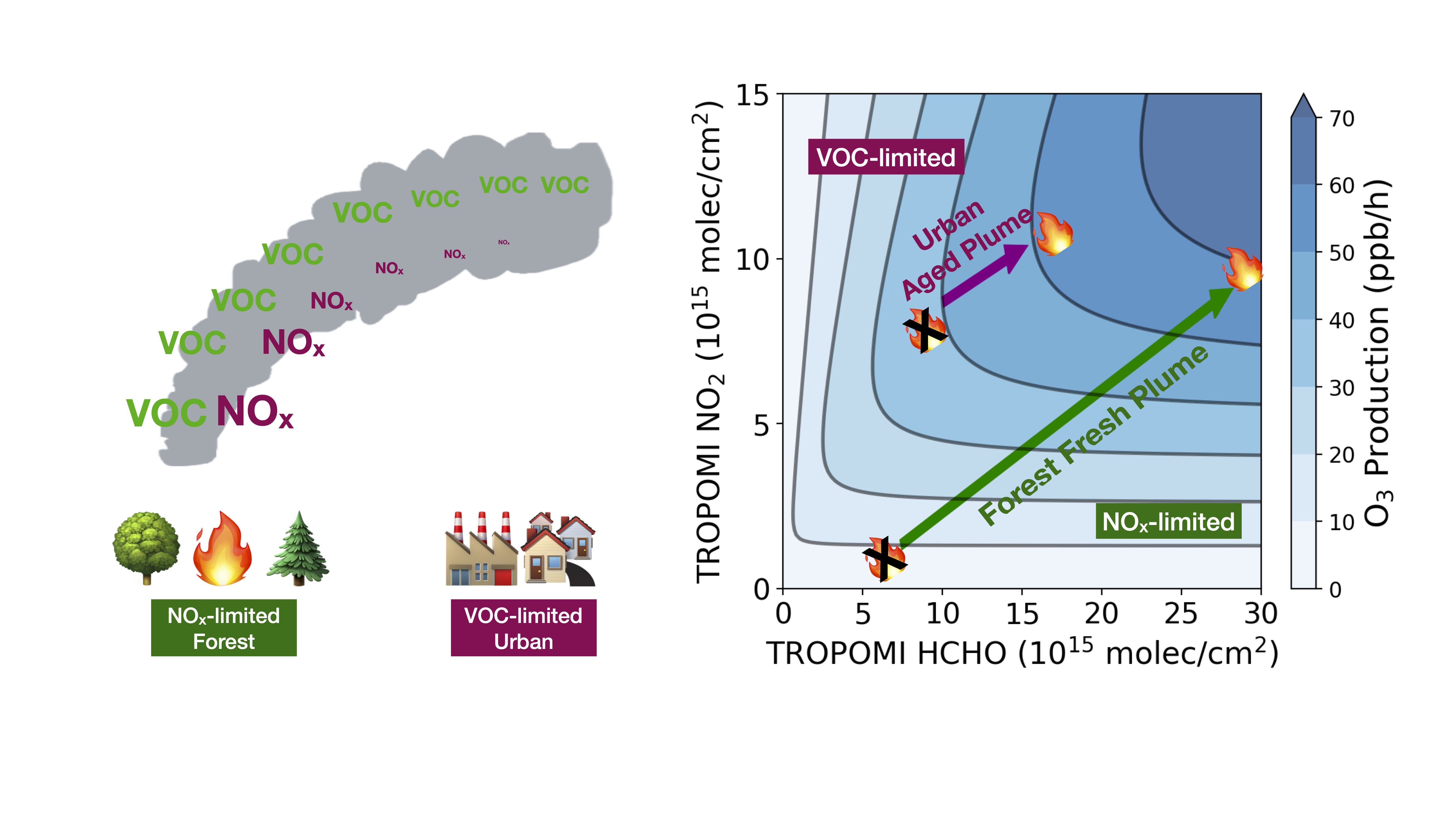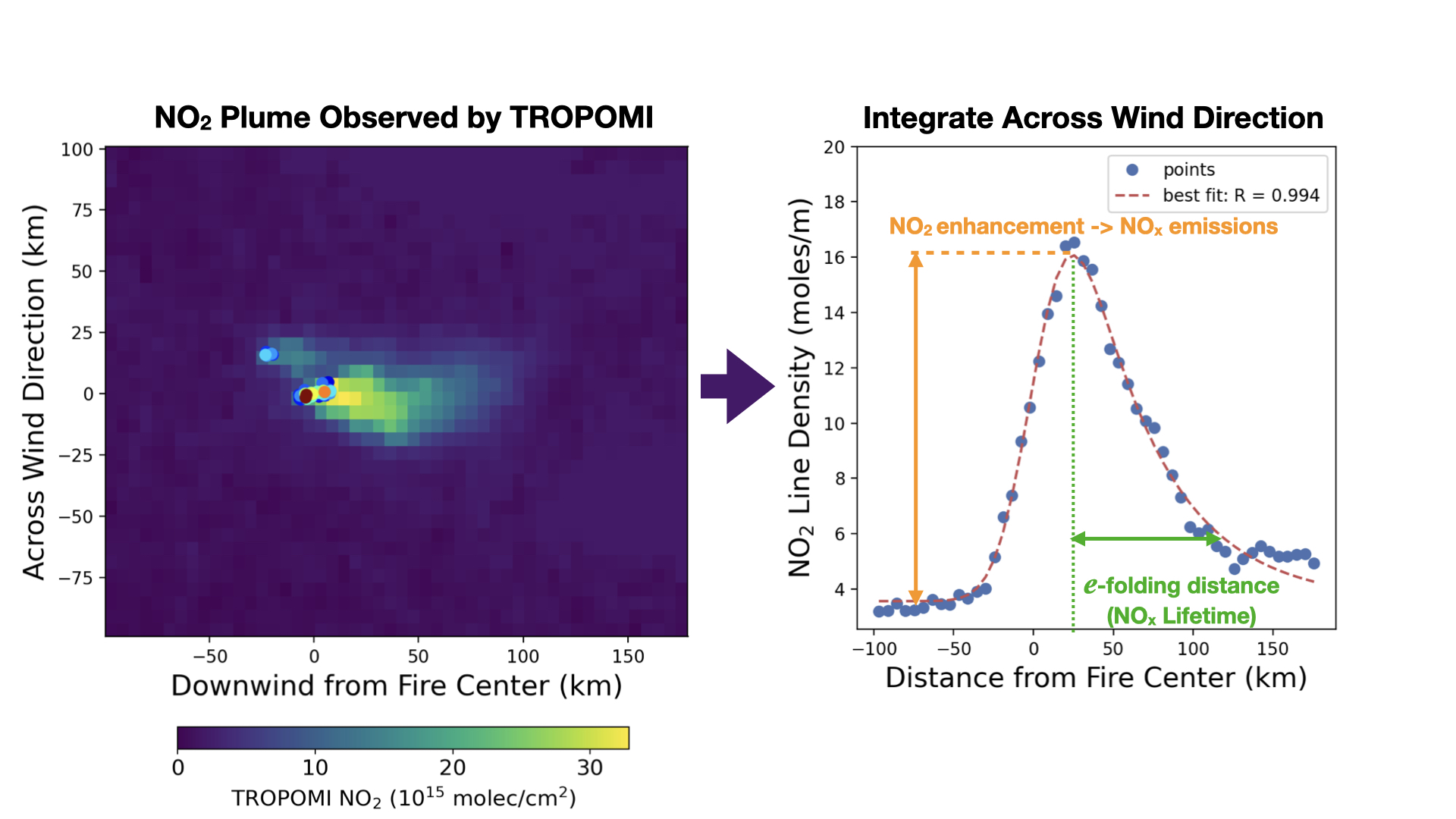Wildfires
Tracking the emissions and chemical evolution of NOx and VOCs from wildfires using satellite observations
1. Impacts on wildfires on Ozone-NOx-VOC Chemistry
While the impacts of wildfires on PM2.5 air quality are widely acknowledged, the extent to which biomass burning emissions affect gaseous air pollutants, such as ozone and its precursors, remains poorly understood. We use satellite retrievals of nitrogen dioxide (NO2) and formaldehyde (HCHO, an indicator of VOC) from the Tropospheric Monitoring Instrument (TROPOMI) to track the evolution of ozone precursors from wildfires. We improved these satellite retrievals by updating the a priori profiles and explicitly accounting for the effects of smoke aerosols. We find that the extensive and intense fire smoke in 2020 led to an overall increase in statewide annual average HCHO and NO2 columns by 16% and 9%. The increase in the level of NO2 offsets the anthropogenic NOx emission reduction from the COVID-19 lockdown. The enhancement of NO2 within fire plumes is concentrated near the regions actively burning, whereas the enhancement of HCHO is far-reaching, extending from the source regions to urban areas downwind due to the secondary production of HCHO from longer-lived VOCs. Consequently, a larger increase in NOx occurs in NOx-limited source regions, while a greater increase in HCHO occurs in VOC-limited urban areas, both contributing to more efficient ozone production.

Related Papers:
Jin, X. , Fiore, A., Cohen, R., (2023). Space-Based Observations of Ozone Precursors within California Wildfire Plumes and the Impacts on Ozone-NOx‑VOC Chemistry. Environ. Sci. Technol., doi: 10.1021/acs.est.3c04411.
Funding Support: NOAA AC4 Program
2. Direct estimates of fire NOx emissions and lifetimes from TROPOMI
Biomass burning emits an estimated 25 % of global annual nitrogen oxides (NOx), an important constituent that participates in the oxidative chemistry of the atmosphere. Our study provides direct estimates of NOx emissions and lifetimes from wildfires using TROPOMI observations of NO2 column. By studying a large number of fires globally, we provide representative NOx emission factors for different fuel types, which are used to diagnose the causes of discrepancies among different bottom-up biomass burning emission inventories. Another contribution of this work is the direct observation of NOx lifetime from fires, which shows a negative relationship with fire intensity, and we attribute this to the increase in NOx abundance and radical production (Jin et al., 2021).
Funding Support: NOAA Climate and Global Change Postdoctoral Fellowship

Related Papers:
Jin, X. , Zhu, Q., Cohen, R., (2021). Direct estimates of biomass burning NOx emissions and lifetime using daily observations from TROPOMI. Atmos. Chem. Phys., 21, 15569–15587, doi: 10.5194/acp-21-15569-2021.